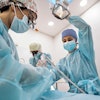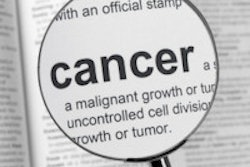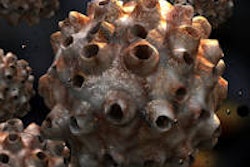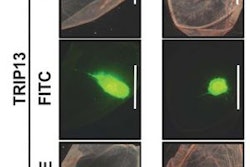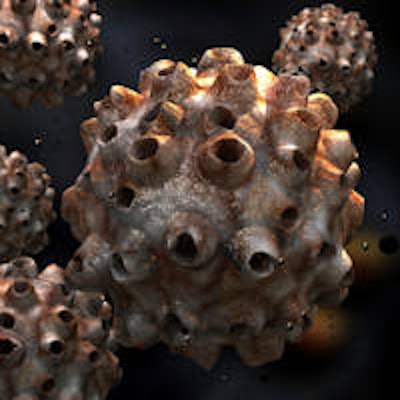
The type of cancer stem cells, rather than the number, is a better predictor of the survival of patients with human papillomavirus (HPV)-related head and neck cancer, according to a new study in Cancer (December 30, 2013). Previously, researchers thought patients with HPV-positive tumors had better outcomes because their tumors had fewer cancer stem cells than HPV-negative tumors. Ohio researchers discovered just the opposite, however.
Head and neck squamous cell carcinoma (HNSCC) is the sixth most common cancer worldwide, with an estimated 600,000 cases diagnosed annually. Although the disease is often linked to alcohol and tobacco use, the pathogenesis of HNSCC is changing after studies showed that HPV is a major risk factor for the development of HNSCC, particularly oropharyngeal squamous cell carcinoma (OPSCC).
“These results are surprising. ... The CSC phenotype may be more important than the absolute CSC number as a marker of aggressive disease.”
High-risk HPV type 16 (HPV16) is by far the most frequent HPV type detected in HNSCC, and the number of patients with HPV-associated HNSCC have tripled in the past 30 years in the U.S. and Europe, the study authors noted. In light of these findings,an epidemic of HPV-positive HNSCC may occur in the near future, according to previous studies.
Cancer stem cells constitute only a small percentage of the malignant cells within a tumor. When these cells divide, they can produce either more cancer stem cells or the nondividing malignant cells that make up the bulk of a tumor, the study authors noted.
Studies show that cancer stem cells are resistant to chemotherapy and radiation, suggesting they may be responsible for the relapse and spread of the disease. For these reasons, it is thought that tumors with high numbers of these cells are more likely to recur.
Patients with HPV-positive OPSCC typically respond better to therapy and have a more promising prognosis than patients with HPV-negative tumors, studies have shown.
In this retrospective study, researchers from Ohio State University hypothesized that patients with HPV-positive tumors had better outcomes because their tumors had fewer cancer stem cells than tumors with HPV-negative tumors. However, the results of the study showed the cancer stem cell type may be more critical than the number of these cells in determining patient outcomes.
Methods
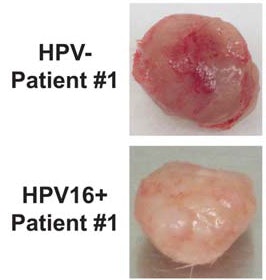 Tumors after patient HPV-negative and HPV16-positive cell lines were implanted in mice. Image courtesy of the Cancer journal.
Tumors after patient HPV-negative and HPV16-positive cell lines were implanted in mice. Image courtesy of the Cancer journal.
For this study, the researchers used 236 patients with newly diagnosed with HPV-related OPSCC who were treated surgically and with radiation and/or chemotherapy at the Ohio State University Medical Center.
Samples from the HPV-negative and HPV16-positive tumors were then cut into small pieces and implanted in mice for analysis.
Results
Comparing the number of cancer stem cells in the samples with OPSCC cancer cell lines, the researchers found that the HPV16-positive samples had more cancer stem cells (2.4 to 62.6) than the HPV-negative samples.
Similar to breast cancer research, several studies show that HNSCC cells with cancer stem cell-like properties are resistant to conventional chemotherapy, the study authors noted.
However, the researchers found no direct clinical evidence that HNSCC, including OPSCC, cancer stem cells are resistant to chemotherapy. It is more important, they concluded, to determine whether the proportion of cancer stem cells increases between pretreatment and post-treatment biopsies of chemoradiation-treated patients with HPV-negative and HPV16-positive OPSCC.
"This information will provide the key evidence to ascertain whether OPSCC CSCs [cancer stem cells] are intrinsically resistant to conventional modalities," the study authors wrote.
Conclusion
"Our in vitro and in vivo results indicated that HPV16-positive OPSCCs have a higher intrinsic CSC pool than HPV-negative OPSCCs," the researchers found. "Contradictory to our initial hypothesis, our results demonstrated that HPV16-positive OPSCC has an elevated intrinsic CSC pool compared with HPV-negative OPSCC. These results are surprising and counterintuitive, suggesting that the CSC phenotype may be more important than the absolute CSC number as a marker of aggressive disease."
The researchers theorized that HPV-related HNSCC is highly curable mainly because cancer stem cells are sensitive to therapy. It is not the presence of these cells that is important, but rather how well therapy eliminates them, the study authors noted.
"This intriguing finding and the observation that patients with HPV16-positive OPSCC respond more favorably than those with HPV-negative OPSCC to current treatment paradigms support the suggestion that CSC phenotype is not homogeneous. Therefore, the reliance on the CSC number may be insufficient to accurately assess the potential of a particular tumor for disease recurrence and/or progression." they concluded.

